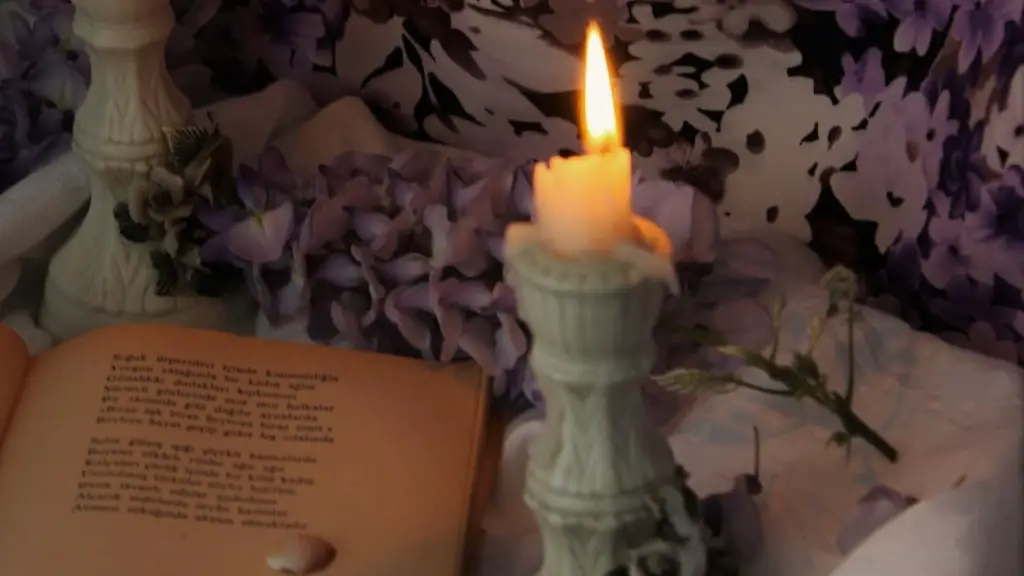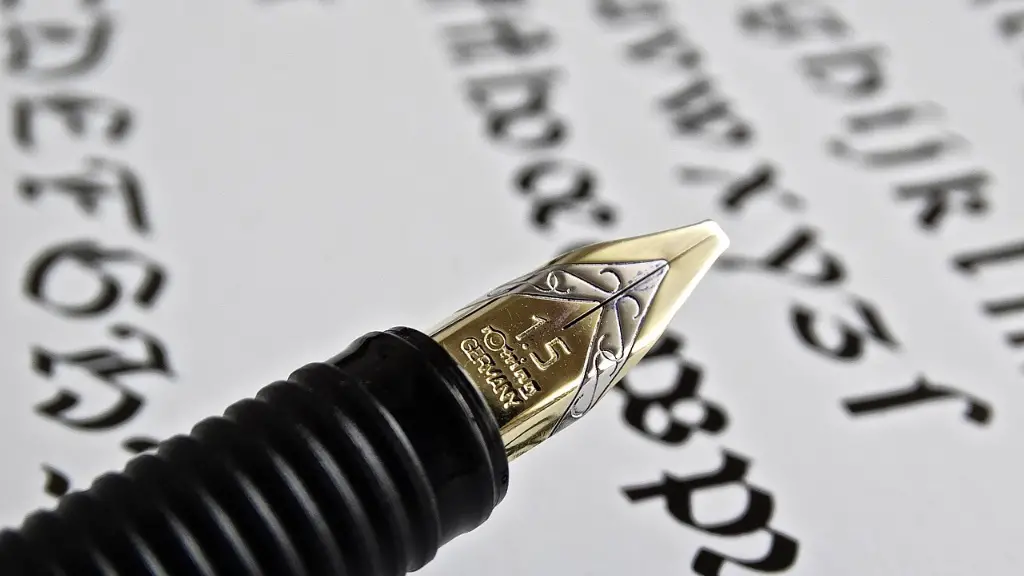Definition of Tone in Poetry
Tone in poetry is the attitude a poet takes toward the subject matter of a poem. Whether it is sad, solemn, serious, playful, or anything in between, it sets a mood for the reader, and triggers an emotional response. Tone can also be used to evoke a variety of emotions from the reader. Furthermore, the tone of a poem can change throughout the poem, depending on what the poet is trying to accomplish. It is an essential element of a poet’s craft and should be carefully considered when writing a poem.
In order to understand tone in poetry, it is important for a reader to understand the concept of tone. Tone is an element of language that relates to the attitude or feeling a speaker conveys when communicating with others or writing a work of literature. Tone can range from positive to negative, and can be used to influence the context and mood of a poem. Additionally, the use of tone can give a poem depth and make a poem more interesting to the reader.
Elements of Tone in Poetry
The elements of tone in poetry can be broken down into two categories – attitude and voice. Attitude refers to the poet’s feelings about the subject matter of the poem, while voice refers to the tone used to convey those feelings. To demonstrate, if a poet writes a poem about losing a loved one, the attitude might be sad, while the voice might be solemn or serious.
Attitude and voice are important elements in creating the tone in a poem. Each one contributes to the overall mood of the poem, and they can be combined to create a range of different tones. For example, a poem may have an attitude of nostalgia, while its voice may be playful. This combination creates a tone of bittersweetness.
Techniques to Set the Tone
Poets use a variety of techniques to set the tone in a poem. One of the most common techniques is the use of literary devices, such as imagery, metaphor, and personification. These devices are used to create a vivid picture of the subject matter, and can also help to reinforce the tone of the poem. For example, a poet may use dark imagery to evoke feelings of sorrow, or use playful metaphors to create a light-hearted tone.
In addition to literary devices, poets may also use various word choices to set the tone of a poem. Eloquent language can give a poem a serious and thoughtful tone, while informal language could make the poem sound light-hearted or humorous. Specific words can also be used to set the tone. For instance, a poem that contains words such as ‘love’, ‘wonder’ or ‘beauty’ is likely to have a positive tone.
The Role of the Poet
The role of the poet is to use their tone to evoke a certain emotion in their readers. It is up to the poet to decide which tone they want to create and how they will achieve it. The poet must pay close attention to the words and devices they choose, as well as the subject matter of the poem, in order to create the desired tone.
An effective poem is one that uses tone to bring the subject matter to life and evoke emotion in the readers. Furthermore, the tone should be consistent throughout the poem and should not change abruptly. This will allow the readers to feel a connection to the poem, and be able to relate to the emotions the poet is conveying.
Examples of Tone in Poetry
In Robert Frost’s poem “The Road Not Taken”, Frost uses imagery and metaphor to create a tone of contemplation and self-reflection. The poem speaks of the choices we make in life, and the paths we take. By using language that evokes a sense of uncertainty and regret, Frost is able to create a feeling of reflection and contemplation in the readers.
In Alfred Tennyson’s “The Lady of Shallot”, Tennyson uses imagery to create a tone of sadness and longing. The poem is about a woman who is cursed to watch the world from her isolated tower, and is longing to break free. Through the use of poignant imagery and language, Tennyson conveys her sorrow and longing.
The Importance of Tone in Poetry
Tone is an important element of a poem and can be used to create a variety of emotions in the reader. It is up to the poet to decide which tone they want to set for the poem, and how they want to achieve it. Properly setting the tone is essential for a poem to be effective, and allows the reader to connect with the poem on a deeper level.
Tone can be used to convey a range of emotions and attitudes, from sadness and longing to joy and playfulness. Effective use of tone can evoke powerful emotions in the reader, and make a poem more meaningful. Additionally, the use of tone can help to make a poem more memorable and enrich the reading experience.
Techniques Used to Fluctuate Tone
A poet may choose to fluctuate the tone of a poem throughout, to give it more depth and complexity. To achieve this, the poet must carefully consider the words and devices they use, and how they will affect the overall tone.
One common technique is to use contrasting imagery and language. For instance, a poet may use words and images that evoke feelings of sadness and loss in one stanza, followed by words that evoke feelings of joy and renewal in the next. This can create a more dynamic tone, and can give the poem a greater range of emotion.
Another technique is to use imagery and language that evoke feelings of nostalgia or melancholy. This can create a tranquil or reflective tone, which can evoke a range of emotions in the readers. Lastly, a poet may use imagery and language that evoke a sense of mystery or tension. This can create a suspenseful tone, and can keep the readers engaged with the poem.
The Impact of Tone on the Reader
The tone of a poem can have a powerful impact on the reader. A poem’s tone can evoke emotions in the reader, and create a strong connection between the poem and its readers. Furthermore, the use of tone can enhance the reading experience, as it allows the reader to relate to the poem on a deeper level.
When a poet is able to effectively use tone to evoke a certain emotion in the reader, it can result in a powerful and memorable reading experience. For instance, a reader who reads a poem with a melancholic tone may feel deeply connected to the poem, and may have a lasting impression of it.
Conclusion
In conclusion, tone is an essential element in a poem, and should be given careful consideration when writing one. Tone can be used to evoke a range of emotions in the readers, and can help to create a more meaningful reading experience. Poets can use a variety of techniques to set the tone, such as using imagery and language, and fluctuating the tone throughout the poem. Furthermore, the use of tone can help to make a poem more memorable, and allow readers to relate to the poem on a deeper level.
Creating a Mood
Creating a mood through tone is an important aspect of writing poetry. The poet carefully considers the language and imagery used to convey how the poet feels about the subject matter of the poem. It can be used to set a reflective, melancholic, or humorous tone, or to evoke other feelings that can connect the poem to the reader on a deeper level. The poet must choose the most effective words and images to create the desired mood, and should pay attention to the overall tone of the poem in order to make it as effective as possible.
Establishing Style
The use of tone in poetry can also help to establish a particular style. For instance, a poet may use a delicate and gentle tone to give the poem a softer, more ethereal feel. Alternatively, they may opt for a more passionate and forceful tone to give the poem a more bold and powerful feel. Whatever the tone, the poet must choose the words and images carefully to ensure they convey the intended style effectively.
Adding Layer
Finally, tone in poetry can also help add another layer to the poem by enhancing its meaning and context. Tone can help to make a poem more meaningful to its reader, as it allows them to connect with the feelings the poem expresses. Additionally, the use of tone can help to make the poem more memorable, as it allows the reader to recall the poem’s context and emotions more easily.
Conclusion
Tone is an essential element of poetry, and can be used to evoke a variety of emotions in its readers. It can also be used to create a particular mood or style, or to add another layer to the poem. When choosing the tone of a poem, the poet must consider their subject matter and choose their words and images carefully. When done properly, the use of tone in poetry can help to make a poem more meaningful and memorable.



